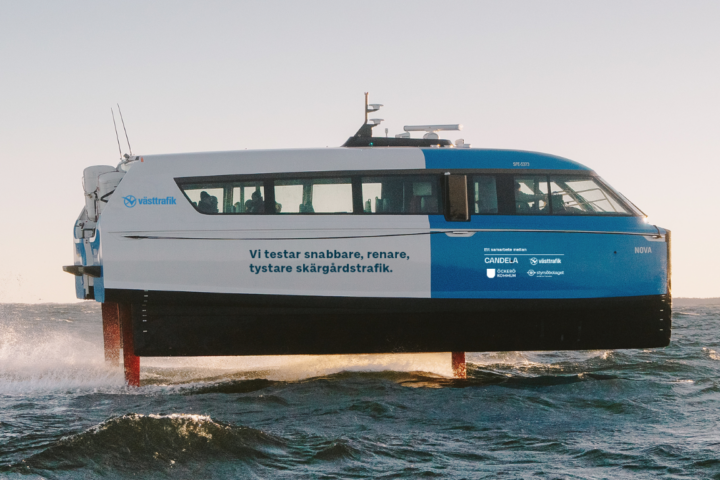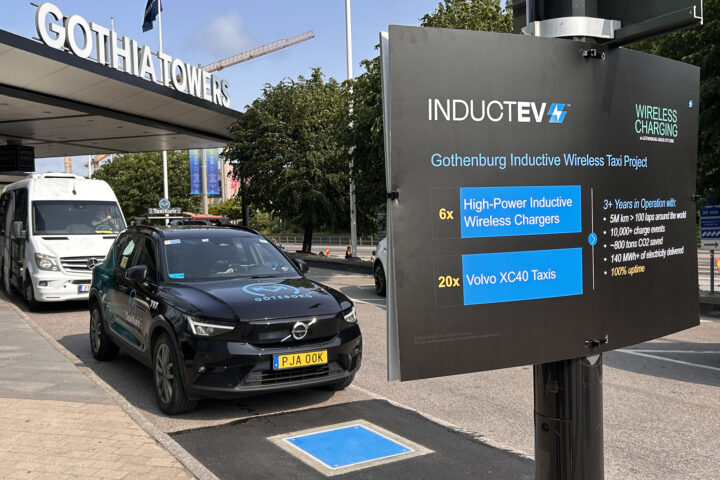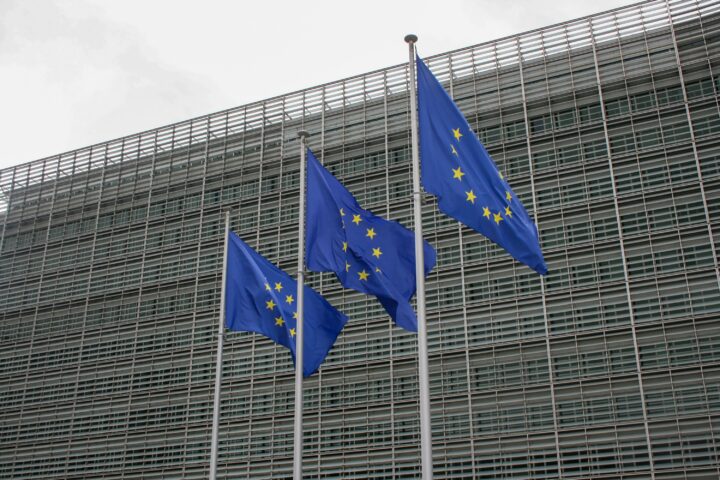The cities of the world are getting bigger, and the increasing number of city dwellers exacerbates the need for transport – worsening an already challenging traffic situation. Swedish technology companies are now evaluating how modern technology can reduce congestion and facilitate intracity mobility for both residents and logistics companies.
The same pattern can be seen all over the world: urbanization is in full swing; more and more people are moving to the city – giving rise to recurring traffic gridlock. Partly because residents need to travel to and from work and school, partly due to all the goods that must be transported.
In many locations, various innovative solutions are being tested to combat congestion and simplify mobility – including in the Swedish capital Stockholm. There, many logistics companies have long wanted to deliver goods to shops and restaurants at night – accessibility across the city is much better then. At the same time, pressure on the road network is eased during the day which means less congestion when people commute or bring their children to and from school. This may sound like a win-win solution, but there is a problem: noise pollution.
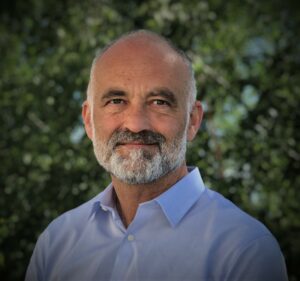
Ulf Ceder, Scania
– The big challenge with off-peak deliveries is noise. You don’t want trucks clattering around cities at night when people are trying to get to sleep, and for this reason many cities have imposed a night-time ban on heavier goods vehicles, explains Ulf Ceder, Senior Manager at transport solution provider Scania’s research and development department.
Scania, together with, among others, McDonalds, and the City of Stockholm, are trying to find out whether it might be possible to circumvent the problem with digital geofencing technology.
– We have developed the Scania Zone application, which enables the owner of a vehicle fleet to set certain limitations on their vehicles based on location. For example, in predefined zone, vehicles might only be permitted to use electric power, or compelled to keep within a set speed limit – which means that the operator can guarantee that trucks in that zone will adhere to certain restrictions.
Since a truck powered by electricity is significantly quieter than one that uses an internal combustion engine, the City of Stockholm agreed to allow pilot night deliveries, if Scania guaranteed that hybrid cars would be used and that these would run on electricity in the designated zones.
– Geofencing technology has enabled us to guarantee this, says Ulf Ceder.
The pilot was run in early 2019 and was a resounding success. But Scania is not the only Swedish company using modern technology to facilitate mobility in cities. On the west coast, together with other companies in the CLOSER collaborative platform, the truck manufacturer Volvo has explored a raft of new possibilities where modern technology can facilitate urban deliveries.
– CLOSER is a platform, knowledge node and project workshop for increased transport efficiency and well-functioning logistics, and since we are neutral, we can bring together multiple players across the chain and this allows us to test larger system solutions, says Kristoffer Skjutare, Programme Manager at CLOSER.
In the DenCity project, for example, Volvo, together with the City of Gothenburg and various logistics companies, tested deliveries and waste collection with heavier electrified trucks as early as 2018, cars that have now become available on the market. These results are now being taken further into the REEL project, where 45 electric trucks will come into operation in 2022 and take active part in regional logistics flows and processes across Sweden.
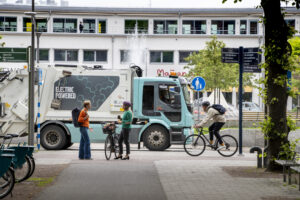
Electric waste disposal unit in Gothenburg. Photo: Per Wahlberg, CLOSER
– Emissions from internal combustion engines are a huge health problem in cities, and now we are taking things a step further and testing electrified vehicles of up to 60 tonnes that will enable us to get rid of diesel as well, says Andreas Josefsson, Project Manager at DenCity and REEL.
Despite new powertrains and quieter transport, cities face major challenges because the boom in e-commerce means that logistics patterns are currently in flux. Instead of a few large trucks delivering to outlets, goods are now delivered directly to the consumer by a multitude of smaller trucks, often filled below capacity. And that ramps up congestion even more.
One solution to that problem might be to mirror cities with so-called digital twins. Filled with all the data available today, such systems can provide indications of how traffic flows are changing, even before decisions are made concerning major infrastructure projects or new laws and regulations imposed.
– For example, the Virtual Gothenburg Lab, a three-dimensional representation of reality allows real-time data from sensors and other types of connected devices in the city to be added and visualized to evaluate what is taking place across the city, says Kristoffer Skjutare.
– If you want to solve the mobility issue, you must definitely scrutinize the suitability of the vehicles involved, but you must also utilize technology to facilitate policy development and decision-making.
Text: Karin Aase
